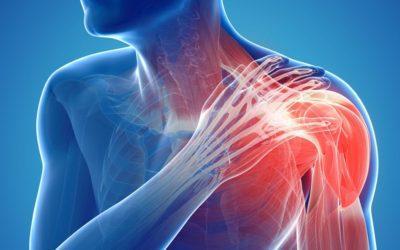Pain is a complicated feeling that people perceive differently depending on a variety of circumstances, including its origin and type. In the medical field, two main forms of pain are usually discussed: neuropathic pain and nociceptive pain. While both cause pain, they develop from different systems inside the body, resulting in variances in their features, treatments, and results.
Neuropathic Pain: Understanding the Intricacies
The neurological system, specifically the nerves, can sustain damage or malfunction that results in neuropathic pain. It may be caused by diabetes, shingles, multiple sclerosis, or nerve-related trauma. Unlike nociceptive pain, which indicates tissue damage, neuropathic pain remains long after the primary lesion has healed due to aberrant signals within the nerve system.
Tapentadol 200mg is a larger dose of the medicine used to treat moderate to severe pain. Tapentadol 200mg, like the 100mg dosage, is an opioid analgesic. Its mode of action includes binding to the mu-opioid receptor and blocking norepinephrine reuptake, resulting in dual pain relief benefits.
Features of Neuropathic Pain
The common descriptions of neuropathic pain, which results from abnormal nerve activity, include burning or shooting sensations.
Hyperalgesia and allodynia: People may feel increased sensitivity to stimuli (hyperalgesia) or pain caused by non-painful stimuli.
Neuropathic pain is chronic in nature, lasting longer than the predicted recovery period of the original injury or ailment.
Neurological symptoms: Along with pain, neuropathic disorders may cause neurological symptoms such as numbness, weakness, or reflex abnormalities.
Diagnosis and Treatment Approaches
A full evaluation, comprising a medical history, physical examination, and, in certain cases, specialist testing such as nerve conduction studies or imaging, is often used to diagnose neuropathic pain. Treatment options seek to alleviate symptoms while also addressing underlying problems. Options might include:
Antidepressants, anticonvulsants, and some pain medications are often administered to modify nerve impulses and treat neuropathic pain.
Physical Therapy: Exercise, manual therapy, and nerve stimulation are some of the techniques that may assist improve function and lessen discomfort.
Interventional Procedures: Nerve blocks, spinal cord stimulation, and other interventional treatments may be used to target particular pain circuits.
Tapentadol 100mg is a medicine used to relieve moderate to severe pain. It is an opioid analgesic. The major method of action is to bind to the mu-opioid receptor and impede norepinephrine reuptake. This multimodal mechanism helps manage pain by influencing both the opioid and noradrenergic pathways.
Nociceptive Pain: Investigating the Sensory Response to Tissue Injury
Nociceptive pain, on the other hand, is caused by the activation of certain sensory receptors (nociceptors) in reaction to tissue injury or inflammation. It acts as a protective system, warning the body of possible injury and encouraging actions that help in healing and recovery.
Nociceptive pain is characterized by its confined nature. Nociceptive pain is usually limited to the site of injury or inflammation, with a clear link between the stimulus and the subsequent discomfort.
Nociceptive pain generally has an immediate start and fades after the underlying cause is treated, as opposed to neuropathic pain, which frequently lasts longer.
Response to analgesics: Traditional pain medications, such as nonsteroidal anti-inflammatory medicines (NSAIDs) or opioids, may help manage nociceptive pain by blocking pain signals or decreasing inflammation.
Buy tapentadol online is a centrally acting analgesic (pain reliever) that treats moderate to severe pain. It is classed as an opioid analgesic and comes in both immediate and extended-release forms. Tapentadol binds to mu-opioid receptors in the central nervous system and inhibits norepinephrine reuptake.
Diagnosis and Treatment Approaches
Nociceptive pain is diagnosed by obtaining a history, doing a physical examination, and using diagnostic procedures such as imaging or laboratory testing to determine the underlying cause. Treatment options that target the cause of pain may include:
drugs: Depending on the kind of pain and its underlying cause, healthcare experts may prescribe analgesics, NSAIDs, or other drugs to relieve discomfort and inflammation.
Physical therapies, such as cold, heat, massage, or bracing, may help relieve pain and promote healing by lowering swelling, increasing circulation, and supporting damaged tissues.
Surgical interventions: When conservative approaches fail to offer relief, surgical intervention may be required to restore damaged tissues or relieve pressure on nerves or other structures.
Conclusion
In conclusion, recognizing the distinction between neuropathic and nociceptive pain is critical for correct diagnosis and therapy. Nociceptive pain, which is typically acute and localized and caused by tissue injury or inflammation, differs from neuropathic pain in that it is a result of nervous system failure and has different symptoms and treatment options. Recognizing these distinctions allows healthcare practitioners to personalize treatment strategies to meet the particular requirements of persons in pain, therefore improving results and quality of life.

